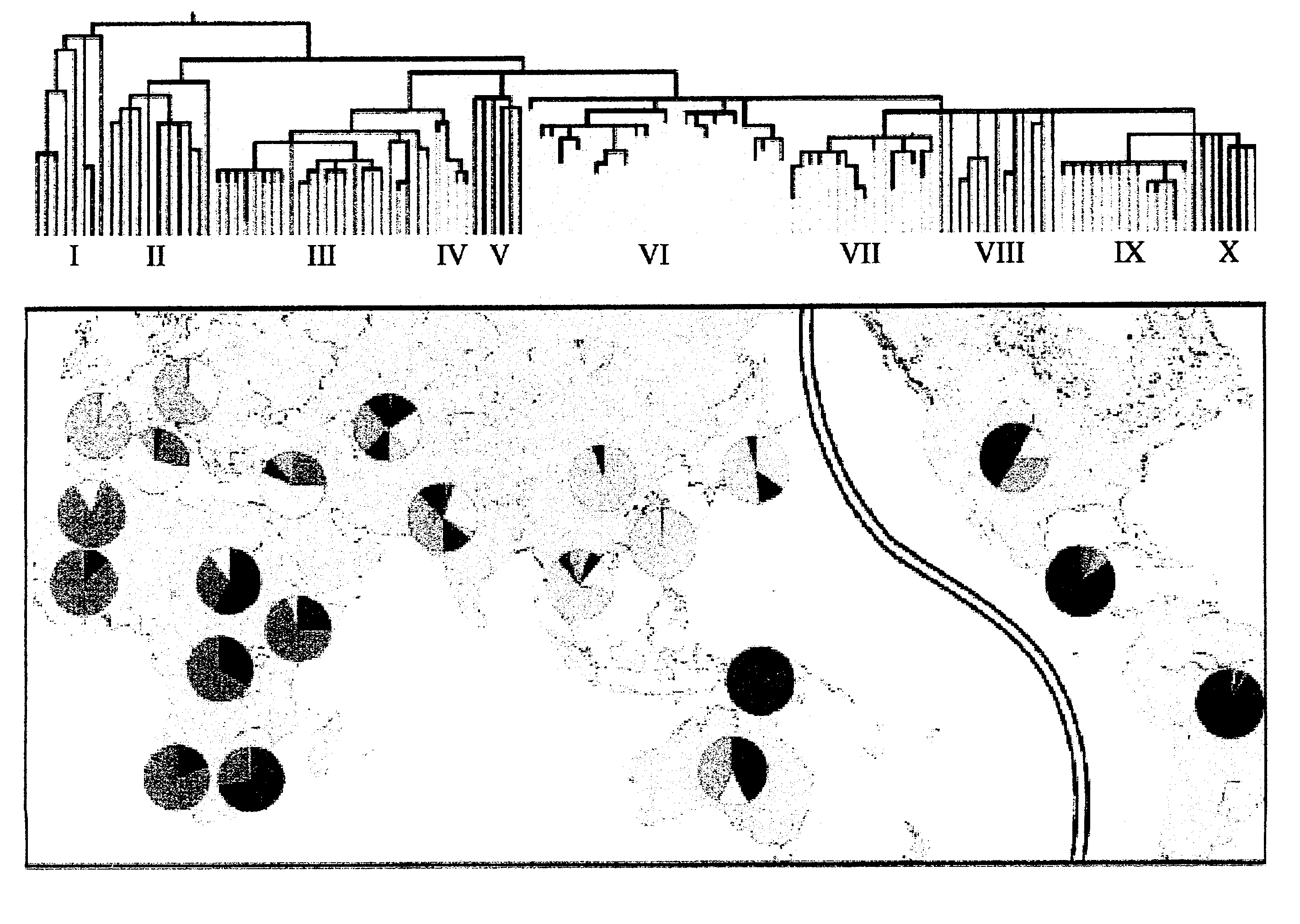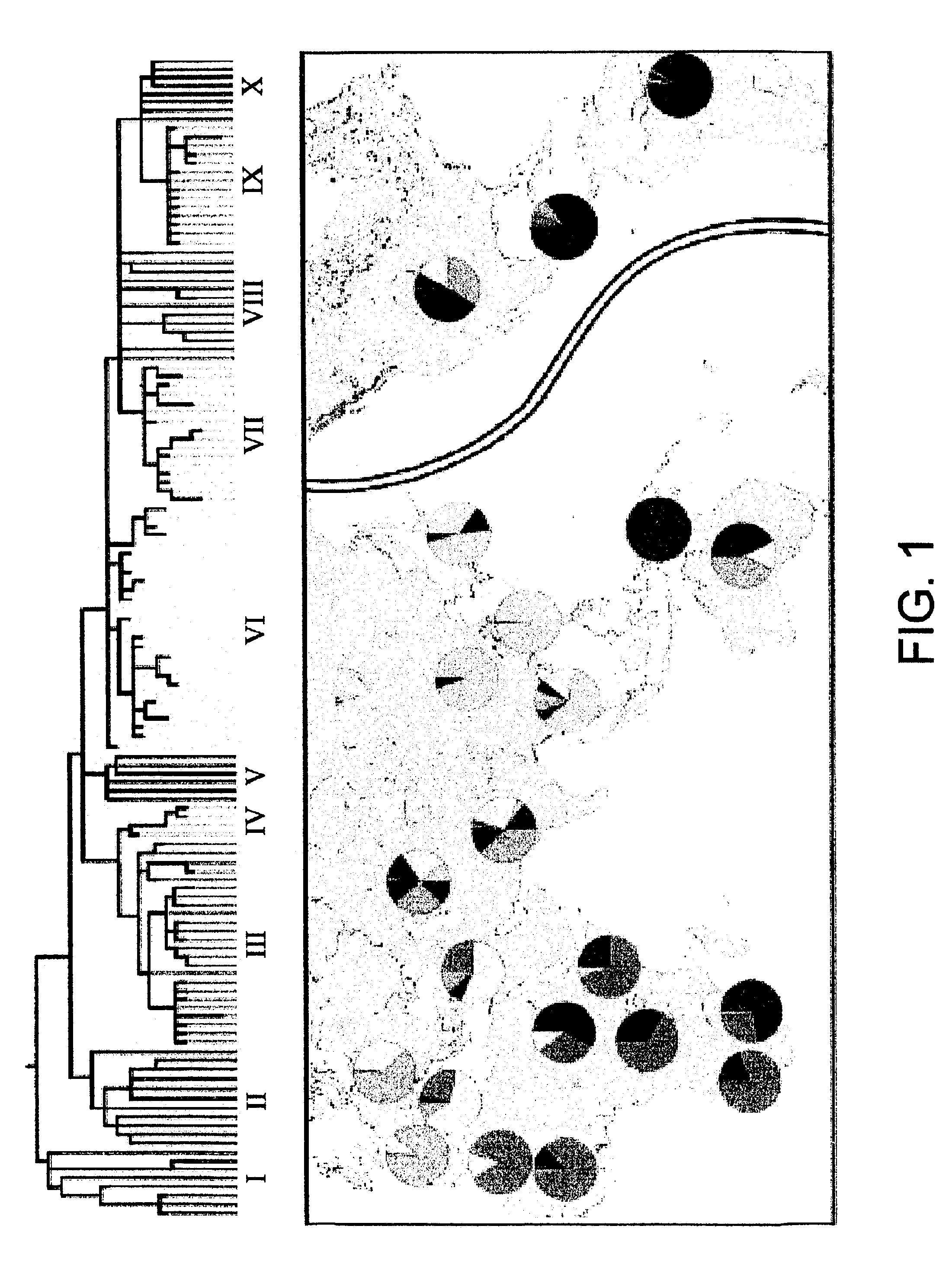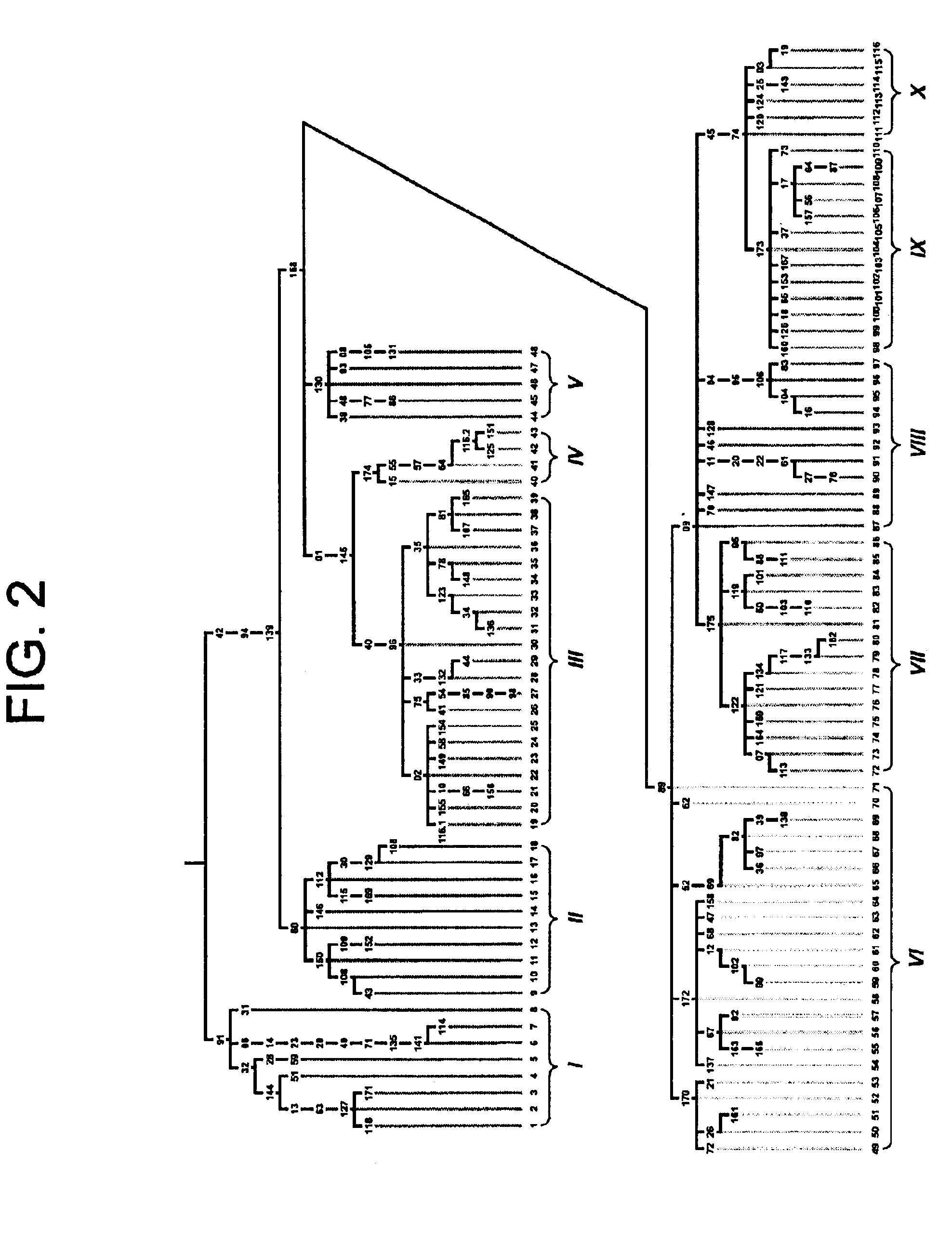Method for determining genetic affiliation, substructure and gene flow within human populations
a technology of substructure and gene flow, applied in the field of nucleic acid polymorphisms, can solve the problems of inability to detect changes in a test, inability to use extensive sequencing to compare more than a few dna segments, inaccurate but not very informative,
- Summary
- Abstract
- Description
- Claims
- Application Information
AI Technical Summary
Benefits of technology
Problems solved by technology
Method used
Image
Examples
example 1
[0100]A phylogenetic tree was deduced from 167 polymorphisms from a Non-recombining Region of the human Y chromosome (NRY) on the principle of maximum parsimony (FIG. 2). Seven of the 167 polymorphisms had been detected by means other than DHPLC and were taken from the literature to demonstrate the applicability of the method of the invention to polymorphisms with less demographic specificity than those in TABLE 1. Seventy-three of the 160 polymorphisms detected by DHPLC had been reported previously. Underhill, P. A. el al Genome Res. 7:996-1005 (1997). Shen, P. et al Proc. Natl. Acad Sci. USA 97:7354-7359 (2000). Of the remaining 87 unreported polymorphisms, 53 were discovered in a set of 53 individuals of diverse geographic origin during the screening of the unique sequences and repeat elements, other than long interspersed elements, contained in three overlapping cosmid sequences (GenBank accession nos. AC003032, AC003095, AC003097) and a few small fragments scattered throughout ...
example 2
[0114]The root of the phylogeny was placed using sequence information generated from the three great ape species. The sequential succession of mutational events is unequivocal, except for those appearing in the same tree segment (e.g., M42, M94, M139). The phylogeny is composed of 116 haplotypes and their frequencies in 21 general populations are listed in Table 3. Forty-two haplotypes (36.2%) are represented by just one individual. Several haplotypes, however, display higher frequencies and / or geographic associations that reveal patterns of population affinities apparent from a maximum likelihood analysis (FIG. 3) performed on the haplotype frequencies reported in Table 3. To facilitate presentation, the 116 haplotypes were grouped into 10 haplogroups as defined either by the presence or absence of mutations occupying strategic positions in the phylogeny. Haplogroups VI, VIII, and X, although polyphyletic, are distinguished by the criteria in Table 2.
[0115]Three mutually reinforcin...
example 3
[0121]A phylogenetic tree was deduced from NRY polymorphisms on the principle of maximum parsimony (FIG. 3). FIG. 3 shows the phylogenetic tree deduced from 304 polymorphisms including those presented in Examples 1 and 2 as well as other novel markers.
[0122]The contemporary global frequency distribution of the 10 Groups based on >1000 globally diverse samples genotyped using a hierarchical top down approach is illustrated in FIG. 3. 171 haplotypes are identified in FIG. 3 as well as their relationship with 309. However 4 markers are recurrent but define distinctive haplotypes when considered in the context of the other markers. The 4 markers are M64.1 (M64.2),M108.1 (M108.2), M116.1 (M116.2) and 12f2.1 (12f2.2). For example M64.1 occurs on haplotype #80 in Group V and M64.2 on ht#159 in Group IX.
[0123]The relationship of the haplotypes to the ten haplogroups is also shown in FIG. 3. Each haplotype can be related to a specific geographical region within the haplotype group, allowing ...
PUM
| Property | Measurement | Unit |
|---|---|---|
| temperature | aaaaa | aaaaa |
| pH | aaaaa | aaaaa |
| thermal instability | aaaaa | aaaaa |
Abstract
Description
Claims
Application Information
 Login to View More
Login to View More - R&D
- Intellectual Property
- Life Sciences
- Materials
- Tech Scout
- Unparalleled Data Quality
- Higher Quality Content
- 60% Fewer Hallucinations
Browse by: Latest US Patents, China's latest patents, Technical Efficacy Thesaurus, Application Domain, Technology Topic, Popular Technical Reports.
© 2025 PatSnap. All rights reserved.Legal|Privacy policy|Modern Slavery Act Transparency Statement|Sitemap|About US| Contact US: help@patsnap.com



